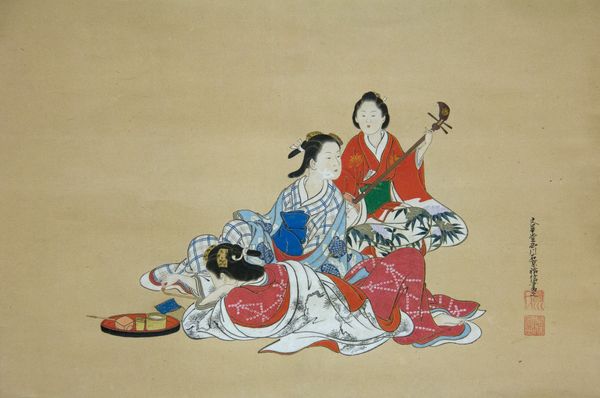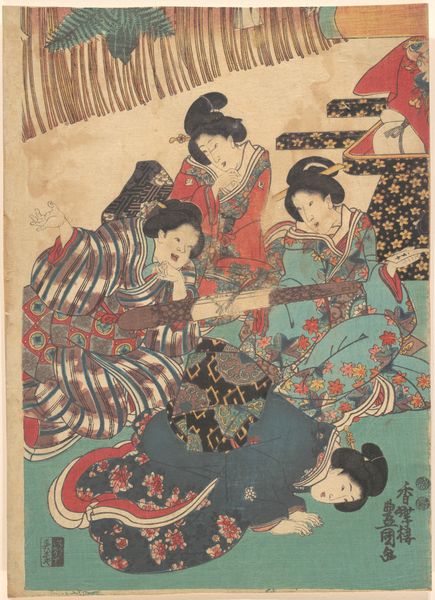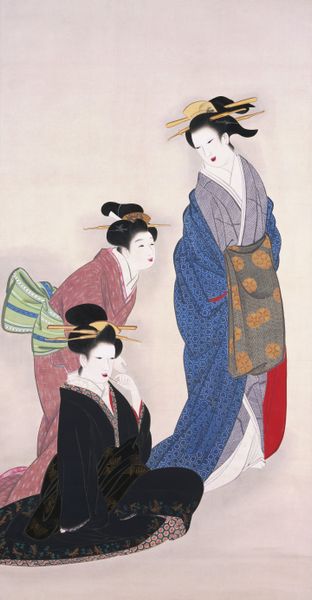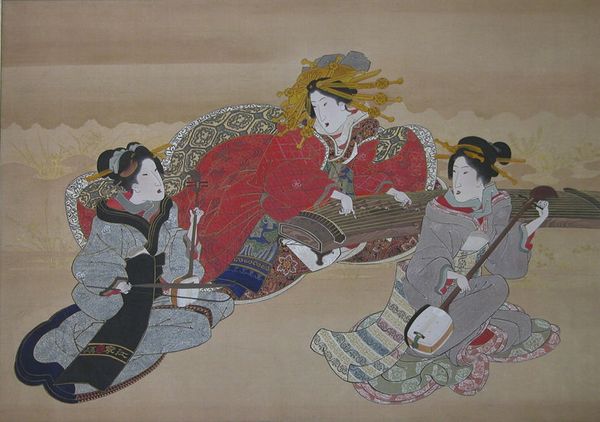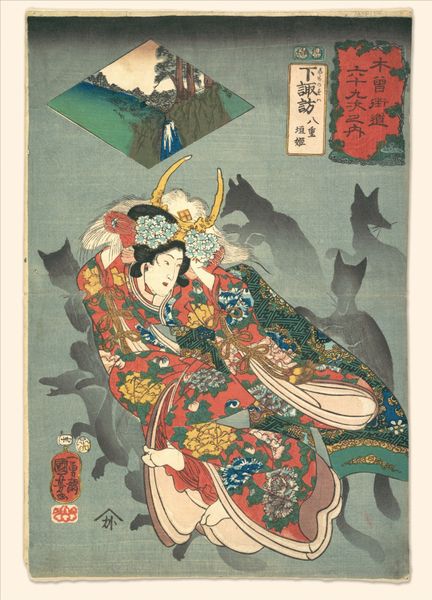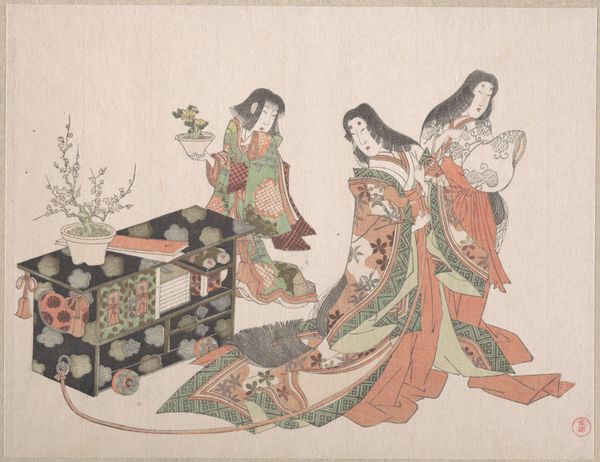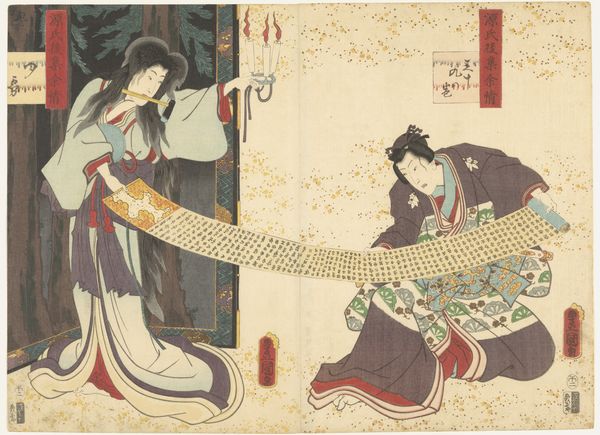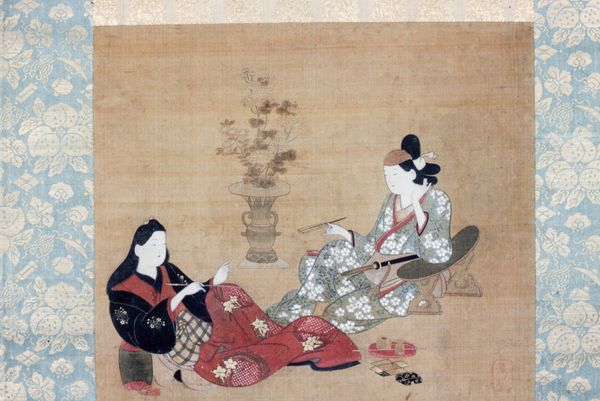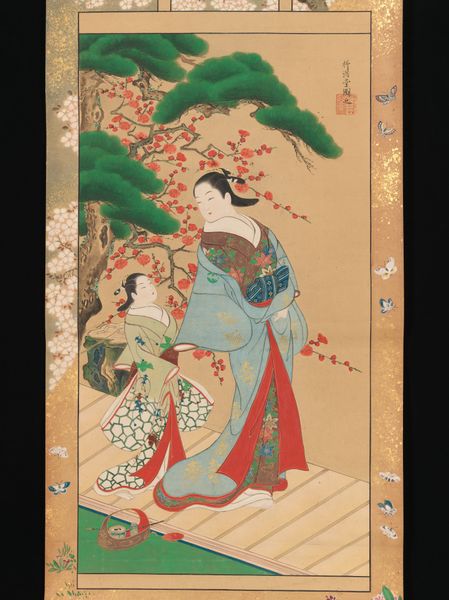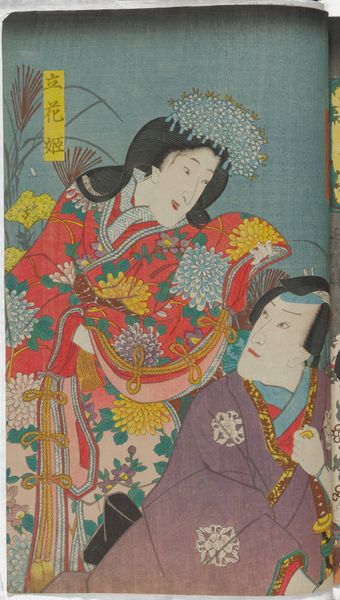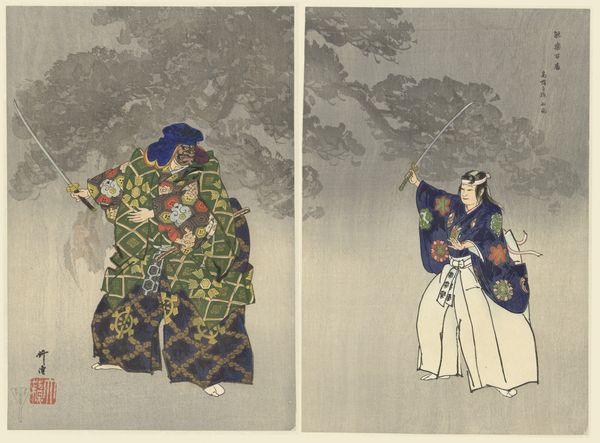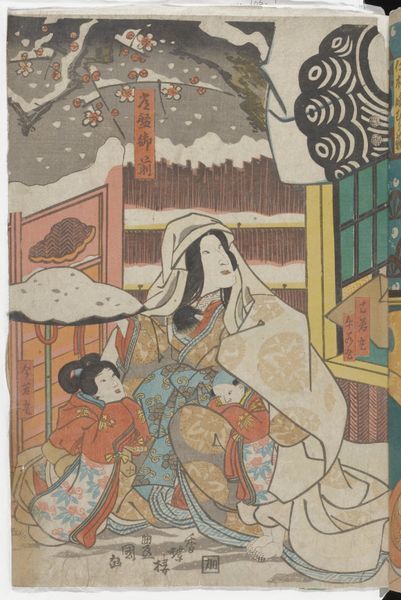
print, hanging-scroll, ink, woodblock-print
#
portrait
#
narrative-art
# print
#
asian-art
#
landscape
#
ukiyo-e
#
japan
#
figuration
#
hanging-scroll
#
ink
#
woodblock-print
Dimensions: 43 3/4 × 22 5/8 in. (111.13 × 57.47 cm) (image)83 1/2 × 29 1/4 in. (212.09 × 74.3 cm) (mount)
Copyright: Public Domain
Curator: This hanging scroll at the Minneapolis Institute of Art is by Utagawa Kunitsugu, dating to around the 1850s. It’s a woodblock print titled "Lady Tokiwa Fleeing with Children." The ink work is quite striking. Editor: What a compelling depiction of vulnerability! The deep snow against the figures—the frantic energy and the desperation practically leap out. Curator: Indeed. Lady Tokiwa, a widow of a slain warrior, flees through a snowstorm with her three sons, all to protect the Minamoto clan lineage. See the discarded geta sandals in the snow, the abandoned basket. She sacrifices comfort and propriety for their survival. Editor: Symbolically potent. The snow itself could represent cleansing, hardship, and ultimately, resilience. White as a color carries those dual associations—purity, but also the blankness of grief or hardship to be overcome. Curator: The patterning on their robes would have been created by expert artisans, the colors signifying the elevated class of these figures even in this moment of destitution. One wonders about the economic implications for the artists crafting these prints, given their wide distribution at the time. Were they fairly compensated? Editor: The artist also employs conventional tropes: notice how the falling snow is rendered, the shapes and arrangements of the natural scenery. Yet within those visual boundaries, it is all carefully composed to maximize the drama of her escape and motherhood. Even the curve of her hair against the pale snow functions on this level. It tells a universal tale of protection. Curator: It’s fascinating to consider the relationship between this depiction and other prints circulating during the same period. This artist no doubt operated within certain workshop practices with specialized roles—carvers, printers, publishers all having their stake in the economics and visibility of it. Editor: These motifs certainly evoke powerful stories and emotional weight across time. That balance, maybe, is why it persists with us. Curator: Thinking about it now, that balancing of economic structures, material practices, symbolic meaning… it all underscores why these images continue to speak volumes. Editor: Precisely. And perhaps it reminds us that within every flight there is the profound human drive to protect and endure.
Comments
minneapolisinstituteofart almost 2 years ago
⋮
In 1159, the powerful clan leader Minamoto Yoshitomo was defeated by Taira Kiyomori, and Lady Tokiwa fled through the snow with their three children: Imawaka, Otowaka, and Ushiwaka (aka Minamoto Yoshitsune, destined to become one of the most famous samurai warriors). No other works are known by the mysterious Kunitsugu, and until recently it was believed that this painting dated to the 1820s. However, the discovery of the similar-looking print by Kuniyoshi from around 1848 suggests differently. The painting cannot have been done prior to the print as Kuniyoshi was a successful and well-known artist who would not have copied a work by an unknown painter. It seems plausible then that Kunitsugu created the painting after Kuniyoshi's print, perhaps on commission.
Join the conversation
Join millions of artists and users on Artera today and experience the ultimate creative platform.
